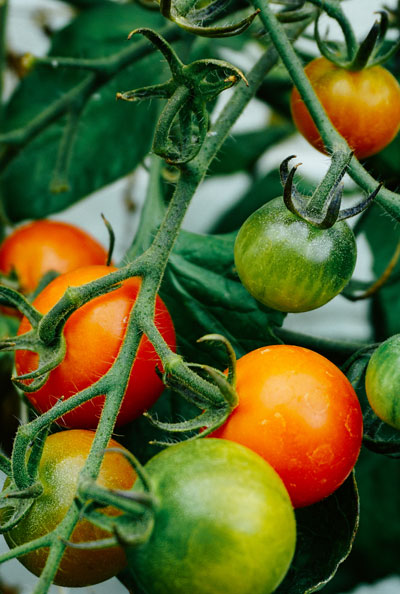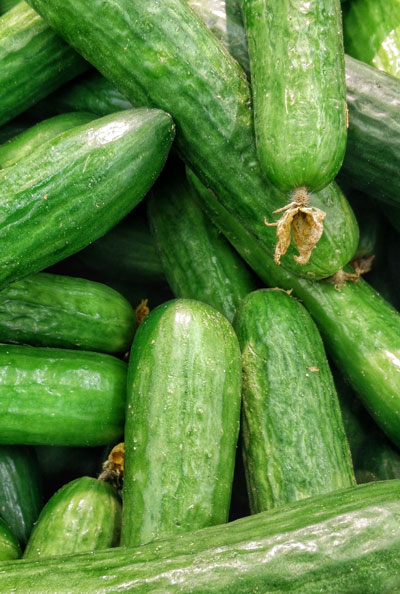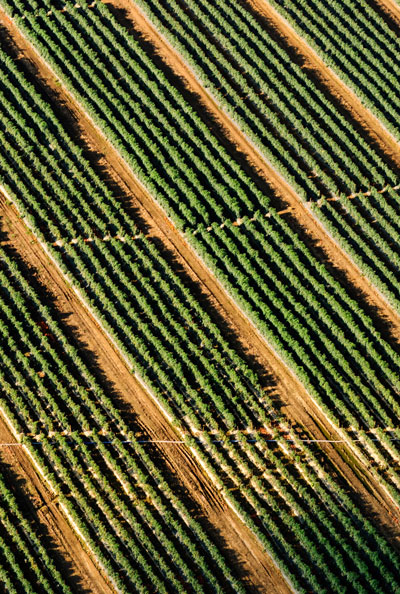Below are listed some of the benefits that farmers achieve by applying humates to their farms, orchards, vineyards or vegetable crops.
Specifically the Benefits are:

Improved Fertiliser Efficiency:
When Humates/Humic Acids are combined with any fertiliser DAP, MAP, Urea, SOP, SOA, etc., then that fertiliser will become much more stable in the soil through the binding of the product to carbon. Leaching and lockups are virtually eliminated as the plant nutrients are held in the soil and made available to the plant roots upon demand thus increasing the protein and mineral contents of most crops.
In addition, these fertilisers will be absorbed and utilised much more effectively (30 to 50% improved uptake) in the presence of humates/humic acids. Humates buffer the soils against damage, which can be caused by acid fertiliser applications.

Long-Life Nitrogen:
Applied nitrogen is notoriously unstable in the soil. Urea, for example, can deliver about 28% of its 48% nitrogen lode. When combined with Humates/Humic Acids however, ammonium and nitrate nitrogen (from urea) is stored on the humic colloid by the free radicals within the humic and becomes a very stable, slow releasing nitrogen source.
All 46 units are retained and the released pattern is extended up to 60/80 days thus allowing 10-40% less nitrogen to be used. Humates/Humic controls the loss of humus which can be caused through the nitrification of nitrogen (Urea) by nitrifying bacteria.

Biological Stimulation:
Raw Humates with their Humic and Fulvic extracts are powerful microbial stimulants. Humic acid feeds and stimulates the Fungi component of your soil-life, while Fulvic Acid is a bacterial stimulant. Good-quality Humates contain a significant Humic and Fulvic component, so a soil application of Humates (liquid or granules) will feed and stimulate both the bacterial and fungal workforce.
Remember that these two Microorganisms can determine disease pressure and crop production, and any investment in their welfare is sound.

Disease, Pest and Frost Management:
When beneficial fungi and bacteria levels are increased by humic stimulation, then the microbial pathogens that cause disease are reduced by a process called ’competitive exclusion’. Pest pressure can be magnified by poor mineralisation and low sugar levels or carbohydrates in the plant.
When Humates/Humic is mixed with fertiliser, they dramatically increase mineral availability and uptake, and they are critical in facilitating efficient utilisation of Calcium and Phosphate – the two elements which govern the production of plant sugars, carbohydrates and protein. In turn, high plant sugars create a plant with high brix levels, thus significantly lowering the freezing point, and thus reducing frost damage.

Carbon-building:
Recent CSIRO (in Australia) research has confirmed that organic carbon (humus) is one of the important determinants of profitability in farming enterprises. For every 0.1% that you can build your organic carbon levels and c.e.c levels, there could be an associated increase in your net profit and associated increase in your land value.
Humates contain up to 69% organic carbon in their own right, but their carbon-building capacity is largely based on their bio-stimulating capacity. An activated, thriving, microbial population converts stubble and crop residues to organic carbon (humus) at a much faster rate. The faster you can convert plant matter to humus, the higher your organic carbon gains.

Hormonal Stimulation:
High-production agriculture involves more than nitrogen, minerals and microbes. Natural hormones play a large role in ensuring good germination, vigorous healthy growth and prolific flowering. Organic Porphyry’s, furnished by humates, assist plants in trapping light energy, then transfer the energy through the electron transport system thus accelerating the growth of plants by improving photosynthesis.
Humates contain a natural auxin-like hormone, which assists in plant functions and also stimulates beneficial micro-organisms like Azotobacter that produce other growth- stimulating hormones.

Saline Management:
The management of excess sodium is set to become a key issue in twenty first century agriculture. Saline irrigation water and high-sodium soils already feature as major problems in many areas. Humates have demonstrated a unique capacity to buffer sodium excesses in both water and soils.
This buffering capacity can reduce or prevent plant damage normally associated with these excesses. Humates can also have a profound effect upon soil structure, opening up compact and clay soils and aiding with the rapid exit of excess sodium and salts.

Fungi Stimulants:
Humates are also a direct stimulant of the beneficial fungi called Mycorrhiza, which colonise the roots of host plants. Mycorrhizal fungi are organisms that live inside and outside root cells and help them reach for nutrients by extending long threads called “hyphae” into the soil.
The hyphae act as extensions of the root system sourcing nutrients for plants. Plants, in exchange, supply the fungi glucose and possibly other organic materials so the fungi can grow and in turn feed the plant. Predatory fungi control pathogenic nematodes by the production of mycelia, which invade their tissue and are then digested.
There is a tremendous value in the productivity and protection of Mycorrhiza microorganisms. Increases in growth production have been documented at 1600% for citrus, 4900% for grapes and 122% for soybeans.
By the release of more or less carbon compounds into the cortical root cells, the host plant can regulate the abundance of Mycorrhizal colonization from the plant root to the soil, thus increasing the growth and intensifying plant development along with crop yields.

Toxic Cleaner:
Humates/Humic stimulate soil microbes which help breakdown and clean up a range of toxic chemicals, oils, heavy metals and sprays which can reside in soils.




Seed, seedling and seek piece effects (Seed Treatment)
- Increased germination or speed of germination
- Improved early rooting and top growth
- Increased seedling survival
- Enhanced tillering
Soil Effects
- Improved soil structure, porosity and tilth.
- Increased content of soil nitrogen and organic matter, and certain other soil components.
- More rapid breakdown of crop residues.
We strongly recommend Humates as the perfect soil conditioner and accompaniment to fertiliser whether you use the natural form, pellets, powder or liquid. However, there may be occasions when you feel that humic or fulvic by themselves are more suitable and so we also provide these products. The use of fulvic in foliar fertiliser sprays would be a good example.
Want to keep learning about Humate and its benefits?
Read another page


Mobile: 027 573 5312
E-Mail: dave@southernhumates.co.nz



